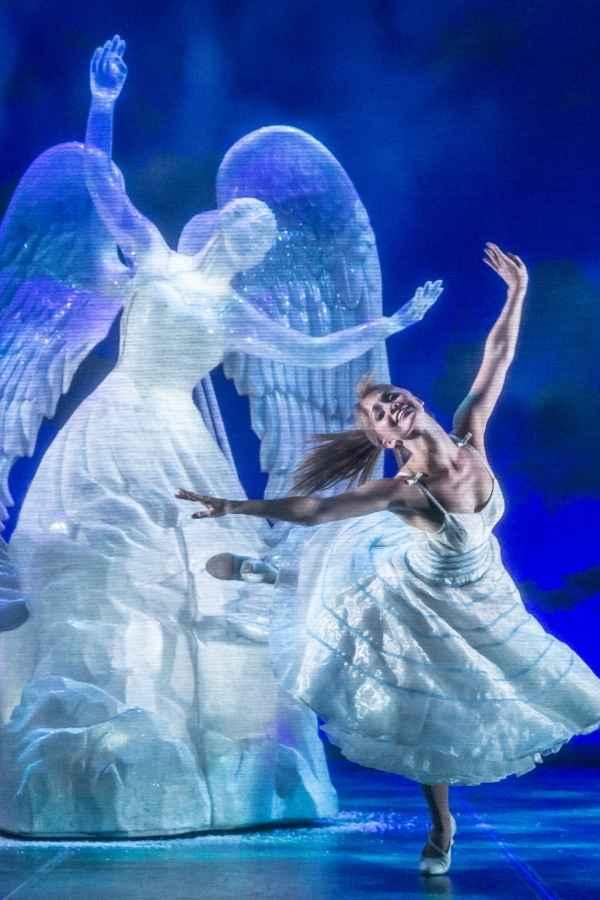Nothing warms the heart quite like nostalgia, and Matthew Bourne aimed well when he chose to craft a dance production of Tim Burton’s iconic film 'Edward Scissorhands’.
The classic story follows Edward, an immortal humanoid created by a lonely inventor who tragically dies before completing his work, leaving Edward with gigantic scissors for hands. A series of events lead Edward into suburbia, a world that proves both warm and cruel in sudden doses. Romance, seduction, and disaster pursue the innocent Edward, who for every social stride forward via trimmed hedges and hair-dos, is viciously forced backwards by slicing mishaps and scandals.
Burton’s deeply personal work is married perfectly with Danny Elfman’s magical and strange musical accompaniment, which provides the foundation for Bourne’s adaptation. Bourne’s 'Scissorhands' extends the themes, taking every ounce of emotion and splashing it across the stage for the ceaselessly moving dancers. The music never stops and the plot plunges forward.
Liam Mower assumes the role of Edward, and his performance is stunning. He embodies Edward’s innocence, but presents such a depth to his longing that you are left feeling this was the role he was born for. In a film where the only spoken words are a slight narrative introduction, the room to act becomes decisively thin. But somehow, Mower acts with every wistful glance into the darkness, captivating you with Edward’s plight.

Image © Johan Persson
Ashley Shaw is an insanely likeable Kim Boggs, Edward’s love interest, in a different portrayal to Winona Ryder’s brooding film edge. Shaw also acts well in a world without words, and you do love her dearly. Nicole Kabera as the seductive Joyce Monroe expertly executes what all good villains should, you absolutely despise her.
Various plot aspects are changed from the Burton film, but the impact is not lost. It is the dancing however that falls questionable. Being a dance film with such a linear, bulging plot and specific characters, it would seem odd for the dancers to be as expressive as say a contemporary dance performance. In saying that, there is a considerable amount of filler dancing, couples swaying back and forth in their '50s aesthetic as the main characters move around them, that is largely unremarkable. The most emotive dance is expressed once between Edward and Kim, and leaves you wondering: is this a dance performance or a play that happens to feature dancing? The plot carries, but you feel that perhaps more could have been said through movement rather than pantomime.

Image © Johan Persson
The striking nature of the piece lies in its other visual aspects. The sets are incredible, and they keep coming and coming, satiating your appetite for beauty. In one memorable scene, suburbia transforms tranquilly from dusk to day, and in the gigantic pink recreation of Kim’s room, cheerleaders dance in holograms. When Edward takes Kim to his garden, another stirring visual ensues. Edward’s own costume is remarkable, the elaborately intricate stitching melds his constructive nature with the look of organic leather, reflecting Edward’s own reality suspended somewhere between real and manufactured.
Mower and Shaw show tremendous chemistry, evidenced by their unconventional entry to the curtain call, and their convincing performances really sell the show. Visually stunning and nostalgic in the right places, Bourne’s adaptation will appeal to many.
★★★☆☆ 1/2.






